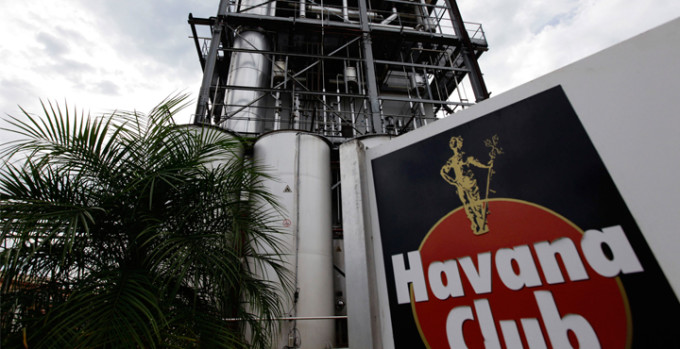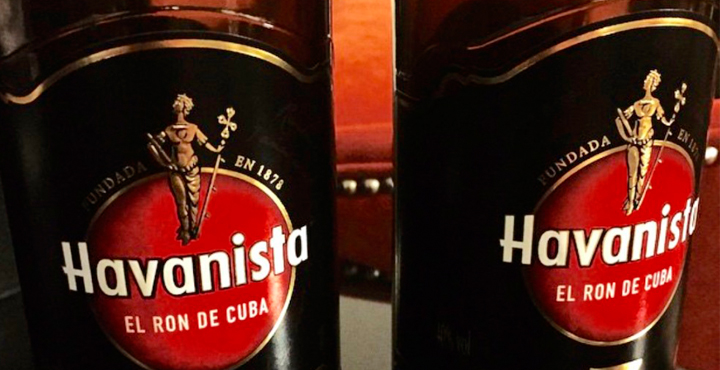
Havana Club at the gates of the U.S. market
SANTIAGO DE CUBA — Some of those who know Jérôme Cottin-Bizonne (in photo at top) say that he’s “aplatanado,” [“bananized”] the Cuban word for a foreign person who has become acclimated to life on the island.
In that context, the French director general of Havana Club International, producer of Cuban rum, states the position of his company with respect to the U.S. market.
“Of course, we have great hopes now that there’s a new situation between the two countries. If the blockade is lifted someday, we’ll enjoy significant growth.”
Since its foundation in 1993, the joint (50-50) venture formed by Cuba Ron and the French distillers Pernod Ricard, has multiplied its sales volume 10-fold and its assets more than 15-fold. Havana Club rum is sold in more than 120 countries, except in the United States, a country that represents 40 percent of the world rum market.
Although direct importation of rum into the U.S. is prohibited, the Amendments to the Cuba Sanctions announced by the U.S. Treasury and Commerce Departments after Dec. 17 allow Americans who come to the island to return to their homeland carrying “no more than $100 of alcohol or tobacco products.”
“Sales have risen much in Cuba since January, due not only to the purchases by U.S. visitors but also to tourism, which grew a lot since the start of the year,” reports Cottin-Bizonne.
Months ago in Miami, several experts on “the Cuba topic” had predicted that something like that would occur.
“What probably will happen is that [the Americans] will buy a lot of rum and tobacco, and that will benefit the Cuban economy,” said Emilio Morales, president of The Havana Consulting Group, at the time.
In an ideal scenario, with Havana Club gaining access to the U.S. market, a brush with Bacardí, Havana Club’s arch-antagonist would be almost inevitable. What would happen then?
“What happens in other countries. We’ll be direct competitors,” Cottin-Bizonne replies.
“We know this situation well, because that’s how it is in the rest of the world, where we compete hard with many other brands,” he continues. “Then we’d have to do what we did in other countries: build up the brand, concentrate on our points of differentiation, on the quality of our rum, of Cuban rum in general, on its brand recognition among bartenders worldwide, and on its ties to Cuban culture.”
The struggle between the two distillers for the rights to the brand appears to have come to an impasse. In 2012, the U.S. Supreme Court declined to examine the retroactive nature of Section 211 of the Omnibus Appropriations Act of 1998, which bars the renewal of the Cuban registration of the Havana Club brand in the United States.
Nevertheless, the recent reopening of embassies and the normalization of relations between Cuba and the U.S. could lead to a review of the case, plagued by arbitrariness and legal misinterpretations.
Considering that the product marketed by Bacardí is manufactured in Puerto Rico, Cottin-Bizonne opines that Havana Club is already the leading brand of Cuban rum, both on the island and abroad, where it is distributed by 80 subsidiaries of Pernod Ricard.
If the opportunity arose to sell to the United States, Pernod Ricard is ready. Last April, Cottin-Bizonne told the French daily La Tribune that the U.S. market is not only the world’s largest but also the market that dictates world trends, so, even though Havana Club is already sold in more than 120 countries, the brand would become truly global.
Although the legal problem has not been resolved, U.S. authorities in 2011 approved the registration of Havanista, another label for the Havana Club 7-year Añejo, which offers the possibility of at least entering the U.S. market — after the blockade is lifted, of course.
In early June, the company sponsored the visit to Cuba of a group of barmen from New York City, Miami and Los Angeles, who toured famous and historical restaurants and bars (both state-run and private) and exchanged views with representatives of the Barmen’s Association of Cuba.
In terms of logistics, the importation of dry materials (cases, bottles, bottle caps) for the export trade is costly. “It gets complicated; the flow slows down,” notes Cottin-Bizonne. “If we had a glass factory 50 kilometers from Havana, things would be much easier.”
In the wake of the construction of the run factory at San José in 2007 after a $100 million investment, the productive capacity of Havana Club grows every year, along with a growth in sales.
In Cottin-Bizonne’s opinion, the increase in private restaurants and bars has become a source of development and dynamism for the Cuban market, Havana Club’s leading market, followed by Germany, France, Spain, Italy, United Kingdom, Canada, Mexico and Chile.
In 2014, Havana Club International sold 4 million cases containing about 50 million bottles; 25 percent of them were sold on the island. Pernod Ricard carries other renowed brands of spirits in its portfolio, among them Malibu, Jameson, Chivas Regal, Absolut Vodka and Ballantine’s.
Progreso Weekly authorizes the total or partial reproduction of the article written by our journalists, so long as source and author are identified.



